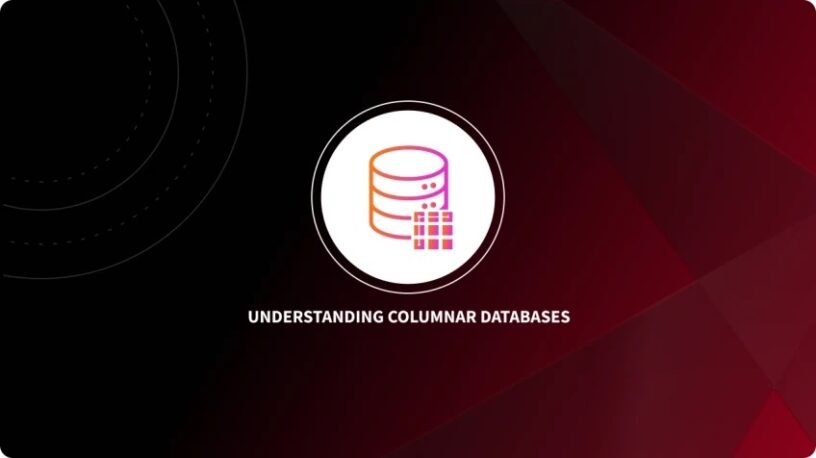Introduction:
In the age of big data, traditional databases often groan under the weight of information. While they excel at processing transactions, their row-based storage struggles with large-scale analytics. Columnar databases are one such architecture that has become more and more popular in recent years. The purpose of this article is to present a thorough overview of column databases, explaining how they differ from conventional row-based databases in terms of functionality and efficiency.
What is a Column Database?
A column database is a kind of database management system (DBMS) that stores and retrieves data by column as opposed to row. It is also referred to as a columnar database or column-store database. With column databases, data is arranged vertically, with each column stored independently, as opposed to traditional row-based databases, which store and retrieve data horizontally. Faster queries and analytics are made possible by this structure, especially when working with large datasets.
Imagine a library storing books by page instead of whole volumes. That’s essentially what a row-based database does. It keeps all data points for a single record together, even if you only need a few. A column database flips the script, storing each column separately. This might seem odd, but it unlocks significant advantages:
Efficiency Advantages
- Data Compression: Column databases often employ compression techniques tailored for columns, leading to reduced storage requirements and faster data retrieval. Since columns typically contain homogeneous data, compression algorithms can exploit repetitive patterns more effectively, resulting in higher compression ratios.
- Query Performance: By storing data in a columnar format, queries can selectively access only the columns relevant to the query, minimizing the amount of data read from disk. This selective column access enhances query performance, especially for analytical queries involving aggregations, filtering, and data transformations.
- Parallel Processing: Column databases are conducive to parallel processing, as operations can be performed independently on each column. This parallelism allows for efficient utilization of multi-core processors and distributed computing architectures, further enhancing query performance and scalability.
- Aggregation Efficiency: Aggregation operations, such as sum, average, and count, are inherently more efficient in column databases due to their columnar storage. Instead of scanning entire rows, these operations can be performed solely on the relevant columns, resulting in significant performance gains, particularly for analytics and reporting tasks.
Functionality Highlights
- Analytics and Business Intelligence: Column databases are well-suited for analytics and business intelligence applications, where complex queries and ad-hoc analysis are common requirements. Their efficient query processing capabilities make them ideal for generating insights from large volumes of data in real-time or near-real-time.
- Data Warehousing: Column databases are often utilized as backends for data warehousing solutions, where they excel in storing and analyzing historical data for decision support and reporting purposes. Their ability to handle complex queries and large datasets makes them indispensable for data-intensive enterprises.
- Real-time Analytics: With the advent of in-memory column databases, organizations can perform real-time analytics on streaming data, enabling immediate insights and actionable intelligence. These databases leverage the speed of in-memory processing coupled with columnar storage to deliver low-latency analytics for time-sensitive applications.
- Vertical Scalability: Column databases offer vertical scalability by allowing the addition of more powerful hardware resources, such as CPUs, memory, and storage, to a single server. This scalability feature enables organizations to handle growing workloads and larger datasets without compromising performance.
Things to Consider
While powerful, column databases have limitations:
- Updates and Inserts: Modifying individual records can be slower than in row-based systems.
- Schema Flexibility: Changing data structures might require rebuilding the entire database, unlike row-based systems.
- Limited Functionality: Some features like complex joins might be less performant compared to traditional databases.
Popular Column Databases
- Amazon Redshift: Cloud-based, cost-effective solution for data warehousing and analytics.
- Apache Cassandra: Open-source, highly scalable option for distributed environments.
- ClickHouse: Open-source, optimized for OLAP workloads and fast analytics.
Conclusion:
Column databases are worth investigating if large-scale data analysis and quick query performance are your main concerns. Make sure your unique use case and data access patterns make sense given the capabilities and constraints of this technology by carefully assessing them. Column databases have the potential to significantly influence the direction of data management and analytics in the future as companies continue to place a high priority on making decisions based on data.

Answers to Frequently Asked Questions on Column Databases:
1. What is a column database?
A column database, also called a column-oriented database, stores data by columns instead of rows like traditional relational databases. Imagine a spreadsheet where each column’s data is grouped together on the disk. This organization allows for faster retrieval of specific data sets, especially when working with large datasets for analytics.
2. When to use columnar databases?
Columnar databases shine in data warehousing and analytics scenarios where you frequently:
- Scan or aggregate large datasets: Since only required columns are accessed, it reduces data transfer and processing time.
- Perform complex queries involving filtering and grouping: Analyzing specific columns is significantly faster.
3. Is a columnar database NoSQL?
Not necessarily. While some popular columnar databases like Apache Cassandra are NoSQL, others like SAP HANA can be classified as relational databases that offer columnar storage options.
4. What is column vs row oriented DB?
The key difference lies in data storage.
- Row-oriented databases (most traditional databases): Data for a single row (record) is stored together, like a table row in a spreadsheet. This is efficient for retrieving entire records but less ideal for complex queries on specific columns.
- Column-oriented databases: Data for each column is stored together across all rows. This is faster for queries that only involve specific columns but may be slower for fetching entire records.




Leave a Reply